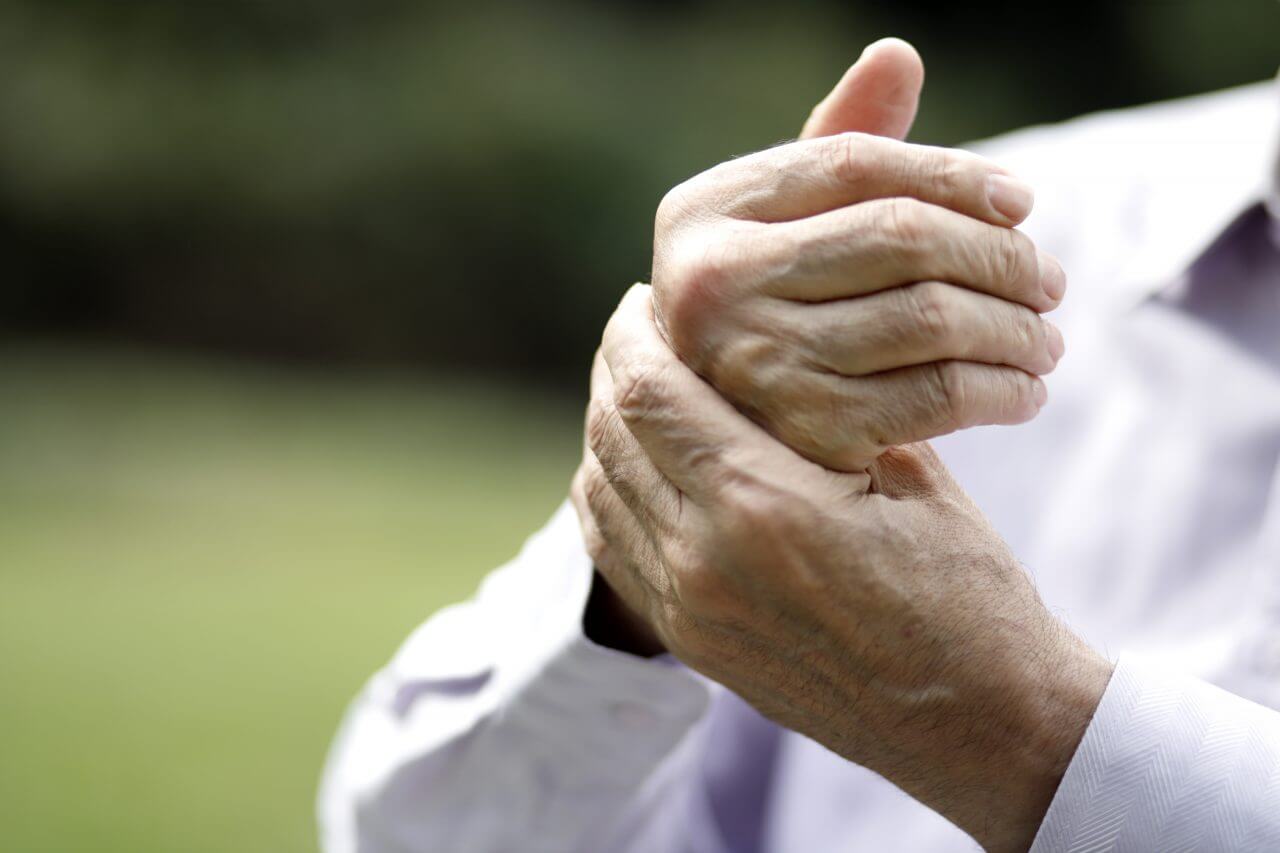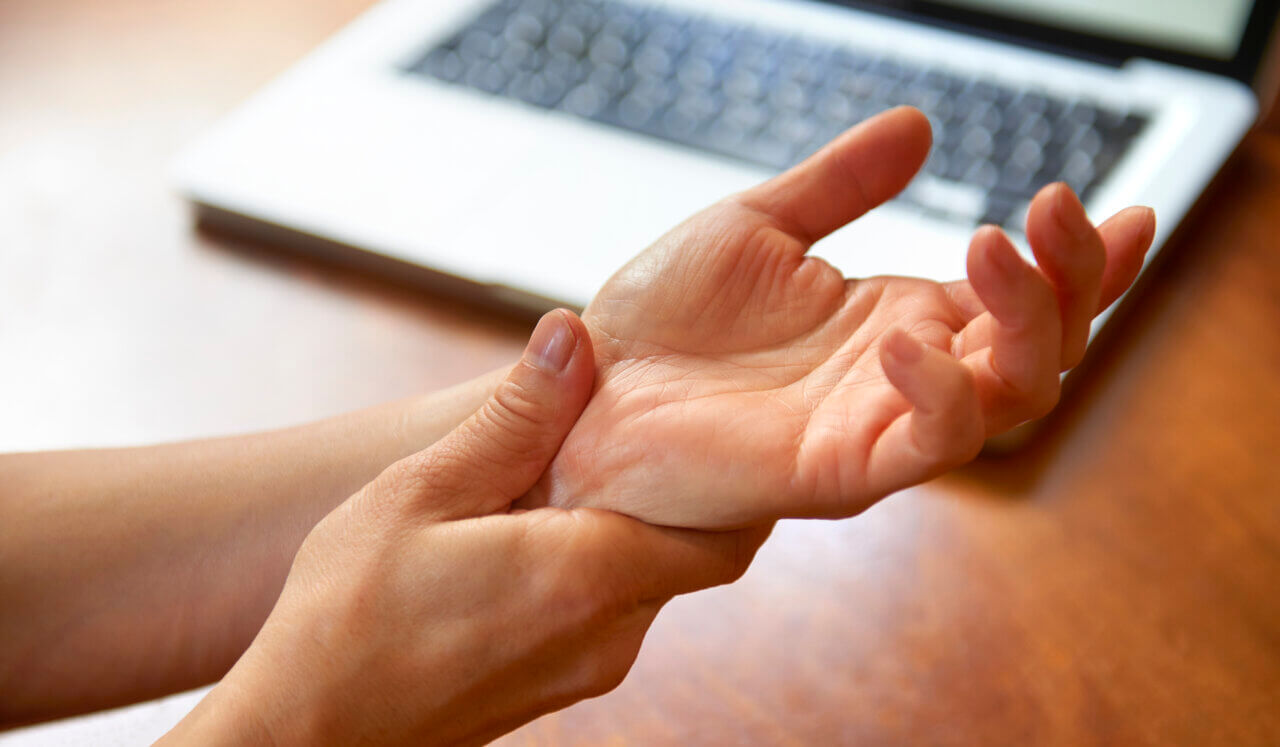Hand Pain Causes & Relief

We’re able to perform very precise movements with our hands because they have a complex structure made up of many bones, joints, tendons, nerves, and connective tissue. Unfortunately, that structure makes hands susceptible to painful injuries and medical conditions. What causes hand pain, specifically? It can develop as a result of fractures, sprains, inflammation, nerve damage, and a number of chronic health problems that cause different types of hand pain.
What Causes Hand Pain?
There are many hand pain causes. Some can affect either hand, while there are also right hand pain causes and left hand pain causes typically associated with an activity performed with that hand.
Some of the most common causes include:
Arthritis
Arthritis is a condition in which joints become inflamed and painful. Although it can occur in any joint in the body, it’s common in the hands and wrists and is one of the leading causes of hand pain. Arthritis can produce many different sensations in the hand or wrist, from a dull or burning pain to grinding of the joints. Medication can reduce pain and swelling, but splinting, surgery or occupational therapy may also be required in some cases.
Ganglion Cysts
Ganglion cysts are fluid-filled bumps that typically develop on the back of the wrist. In many cases, they aren’t painful. However, if they put pressure on nearby nerves, they can cause numbness, tingling or pain. Often these cysts go away on their own. If a cyst is causing pain, your doctor can drain or remove it.
Trigger Finger
Also called stenosing tenosynovitis, this condition occurs when the tendon sheath—a ring of connective tissue at the base of a thumb or finger—becomes swollen. This swelling makes it hard for the tendon to move and can cause pain as well. Treatment typically includes resting the thumb or finger, splinting it, taking anti-inflammatory medication, or getting steroid injections. If other treatments don’t provide relief, surgery may be required.
Injury
Injuries to hands caused by things like sports, falls or construction accidents are common. The many small bones in the hand can be broken easily, and the muscles of the hand can be strained or torn. These conditions cause pain. Treatment depends on the type of injury and includes everything from rest to surgery.
Raynaud’s Phenomenon
Also known as Raynaud’s disease, this condition causes fingers and toes to become numb or to have a prickly feeling when exposed to cold temperatures or when you’re stressed. The symptoms are produced by excessive narrowing of blood vessels. In most cases, no treatment is needed unless the condition is caused by another health problem.
Carpal Tunnel Syndrome
This condition occurs when what’s called the median nerve gets squeezed by a narrowing of the carpal tunnel, which is a passageway for nerves and tendons at the base of your hand. The narrowing can be caused by thickening tendons, swelling or inflammation in the area. Symptoms of carpal tunnel syndrome include pain and stiffness in the hand or wrist, as well as trouble performing certain tasks or grasping small objects. Treatment can include applying ice packs, splinting, acupuncture, over-the-counter pain medication, steroids, or surgery.
Hand Pain Treatment at Home
In many cases, sore hands will respond to hand pain treatment at home. These treatments can include:
- Rest. Overuse can cause or worsen hand pain. Avoiding the repetitive activity that’s causing your pain for a period of time allows inflammation to subside.
- Splinting. If rest doesn’t resolve hand pain, it can be helpful to wear a splint or brace to immobilize the hand. This may be in addition to rest, or you might wear the splint to support your hand while you perform the activity.
- Ice. Applying ice to the affected hand can help control inflammation. As the swelling goes down, the pain typically subsides.
- Anti-inflammatory medication. Medications called NSAIDS (non-steroidal anti-inflammatory drugs) can help reduce swelling and relieve pain. These drugs have side effects, however, so you should talk with your doctor about whether they’re right for you.
- Heat. Applying heat to painful areas can provide relief. This may include running warm water over your hands or applying a warm, moist compress to them.
Seek Medical Attention for Hand Pain
Hand pain can have a negative impact on your quality of life. However, there are many ways to treat it once you understand the cause. Your doctor can help you make that determination.
When to See a Doctor for Hand Pain:
Contact your doctor if you have any of these symptoms associated with your hand pain:
- Numbness in the hand that gets worse
- Pain that doesn’t respond to home treatment
- Signs of infection such as redness, chills or a fever
- Inability to make a fist or bend the fingers
- A deformity of the hand or fingers as a result of an injury
Request an appointment with the Baptist Health Orthopedic team if you need help with treating hand pain.



